I try to design a simple slider in the following environment; however, it cannot work
Note: I use Jupyter Notebook, so I utilized FigureCanvasTkAgg and TkAgg.
Note: I referred to the following great discussion; however, it still cannot work.
Python: Embed a matplotlib plot with slider in tkinter properly
from tkinter import *
import tkinter.ttk as ttk
import matplotlib
import matplotlib.pyplot as plt
%matplotlib widget
from matplotlib.widgets import Slider
from matplotlib.backends.backend_tkagg import FigureCanvasTkAgg
matplotlib.use('TkAgg')
root = Tk()
root.title('TEST')
root.geometry("800x800")
def plot_noise():
fig = plt.Figure()
canvas = FigureCanvasTkAgg(fig, root)
canvas.get_tk_widget().grid(row=6, column=0, columnspan=3, rowspan=3, sticky=W+E+N+S, padx=0, pady=0)
slider_bar = fig.add_axes([0.12, 0.1, 0.78, 0.03])
slider_de = matplotlib.widgets.Slider(slider_bar, 's_bar', 0, 124, valinit=20)
ttk.Label(root,text = "Push the Button", font=('Arial', 25)).grid(column=0, row=0, ipadx=5, pady=5, sticky=W+N)
resultButton = ttk.Button(root, text = 'show', command = plot_noise)
resultButton.grid(column=0, row=1, pady=15, sticky=W)
root.mainloop()
However, the slider cannot work. I mean I cannot move the slider (no error pops out.)
How to fix that? Thanks!
